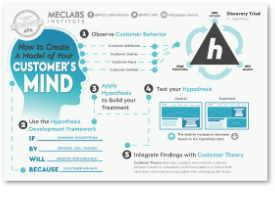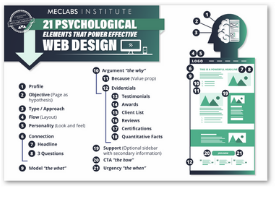I’ve noticed that my own email newsletter reading habits have changed dramatically as the influx of spam has increased and I have to spend more time battling to keep my in-box “clean” and less time reading the good stuff. Dailies: Forget ’em. Weeklies: Only sometimes when they have killer subject lines. However, strangely I am reading more monthlies now.
I used to sneer at email publishers who were only monthly because I thought in this super-speedy age, who’s going to remember or notice you with just one lone email a month? As of today I’m totally reversing my position. If your monthly has true value to the end reader, it’s not just self-promotional we-we-we talk, and you make it clear it’s a monthly (perhaps in the name or subtitle), then even if your subject line sucks I’ll probably open it.
Why? Partially because I’m so grateful you’re not clogging my email box with loads of stuff. You’re respecting my email time. Also partly because I’m aware that if I delete this one, I gotta wait a whole month for another. It’s not “replaceable” with another issue in a few days. It gains inherent value.
My advice now is: If you’re doing a newsletter as a marketing tool to impress people, high quality content matters more than frequency. Don’t slam out a bunch of good-enough frequent issues. Instead, work on a really-great less frequent issues.
According to an excellent article in last Sunday’s Washington Post, there’s been a 600% increase in spam over the last year. In April 2001, vendor Brightmail counted 700,000 spam “attacks” (that’s not individual pieces of spam, but spam campaigns which might include millions of names). In April 2002, they counted 4.3 million attacks. Wow.
This affects legitimate marketers tremendously because your recipients are inundated with email and less likely to pay attention to yours (see my blog below), and their ISPs and IT departments are using filters that might stop legitimate email along with spam.
Plus, it gives rise to yet more movements; such as state and Federal legislation as well as vigilante black-list/blackhole organizations; which can also catch legitimate marketers in their net. Kind of like dolphins getting caught along with tuna.
What can you do? Expect your results metrics to continue to decrease while this spam avalanche is going on; track legislation carefully; monitor your own broadcast email delivery reports constantly to make sure there’s no sudden upsurge in bounces that might be an ISP rejecting your message outright; and make sure the email vendor you use to send out broadcast messages has a full-time privacy and spam officer who has strong personal relationships with major ISPs, including AOL. Also, (shameless self-promotion) be sure to read our new newsletter EmailSherpa every week which covers this stuff in more detail.
It’s sometimes useful, it’s to-be-taken-with-a-grain-of-salt, it’s always a good read; Trafficology.com’s monthly newsletter. This monthly newsletter is specifically for entrepreneurs and enthusiastic Web amatures who want low-cost or no-cost ways to get more traffic to their sites. Some of the recommendations are only good for folks with time on their hands (i.e. not most of us). Others are iffy, in particular when it comes to tactics to “fool” search engines into giving your site more prominence (these tactics can backfire on you badly if mishandled), so use your judgement.
NetCreations Founder Rosalind Resnick (now retired), who invented the idea of renting double opt-in email names quoted in AvantMarketer on Friday, “Internet users are getting emailed to death out there, both on the opt-in and unsolicited side. Also, permission has become so mainstream now that while in the past there was a real difference between acquisition email lists harvested from newsgroups and permission-based lists, being permission-based is no longer the differentiator it used to be for either the marketer or the user. So, what we see now is that many users are tuning out commercial email, or unsubscribing from it or blocking it, completely. In a strange way (that very few of us could have imagined in the earlier days) opt-in email has been too successful. It’s really become too pervasive.”
According to a Catalog Age Weekly article about Jupiter’s latest research:
“The survey also reveals that 82% of online consumers are willing to provide various forms of information to shopping Websites from which they’ve yet to make purchases in exchange for something as modest as a $100 sweepstakes entry. In addition, 61% of consumers will supply their e-mail address and 49% will give their full name. Only 19% will provide their phone number, and just 18% will provide their household income.”
To which I have the following deeply insightful comments:
– Our Case Studies have shown that consumers are far more likely to respond to sweeps with “modest” prizes they believe they can win, than other stuff. A more useful number might have been how that percent changes depending on the prize.
– That 61% of folks who’d happily hand over emails consists of a few real newbies who don’t know better and then hoards of Net savvy people who will give you “an” email address such as “my4thbackupaddress@yahoo.com” which they never check and no longer feeds to their primary email at work since Yahoo began charging for that about a month ago.
– That 39% of people who would not hand over their email are the ones who haven’t figured out about starting a free email account for required online forms yet.
– Even the 18% will probably lie about their household income. Hey I’m not cynical, this is reality.
According to Catalog Age, the responsible Jupiter Analyst said something much more boring about these results, and he used big MBA words to do it with. But, you guessed that already, right?
When personalization goes wrong…. If you’ve been to Amazon this week, and you’re a registered shopper there, you’ve probably noticed their new merchandising feature “Gold Box Specials.” A gold box sits at the top right of your screen taunting you to open it a la Pandora. When you do, it flashes a few different special offers-of-the-day at you, which you have 60 minutes to accept or forget forever. Minutes then tick down as you hang out on Amazon for the next hour.
Yes, I’ve already contacted Amazon’s PR dept to line up an interview with a marketer there who can tell us if this works or not. In the meantime I tried it out myself, and was deeply disappointed because Amazon, a site famed for presenting personalized offers in every way possible, offered me a series of power tools.
The day I’ll buy a cordless screwdriver is the day I’ll buy a big wheel truck ( i.e. never, ever, ever). Given that I’ve been shopping on Amazon since the mid-90s, they should have known that.
Should you offer printed brochures or catalogs from your Web site even if they just duplicate the info that’s already on your site? According to our Case Studies in both B2B and B2C, people who request print literature on your site generally convert at a higher rate than other lists from leads into sales. However, whether it’s worth it to you depends on the cost of printed literature and your profit margins. Worth testing.
Why would someone ask for a printed copy when they can just get it online (or print off pages of your site)? They may want to share info with their work colleagues or family to get permission to spend money, and a “nice” brochure helps. They may want to higher quality pictures of your offerings than the Web can offer sometimes – especially for travel and apparel. They may also just prefer traditional media. Whatever.
I love marketing articles that are seriously practical and helpful. Here’s a link to a new one from Kristin Zhivago entitled, Justifying Marketing Automation Systems. It details out how much money you can expect to save from various types of marketing-related software and ASPs, and includes rules of thumb plus step-by-step instructions for you to figure out how much you’ll save. I wish this article had come out before budgeting season, but hey beggars can’t be choosers.
Oooh! Wouldn’t you know it? Email newsletter AdBumb just ran an in-depth interview with me on stuff like the state of the email marketing industry, etc. If I were smart (or even remotely close to the “genius” AdBumb claims I am – ha ha ha ha, somebody forward that issue to my parents please), then I would have arranged for our newly revised Web site to be launched today so all the traffic coming in from resulting publicity won’t see our old, tired, slightly-incorrect site. Instead, the new site launches later this week.
Genius marketers coordinate publicity and their site’s status. I’m lookin’ lame today.
If you’d like to see a copy of AdBumb with the interview with me, along with other fun articles, then email me at AHolland@MarketingSherpa.com and I’ll forward you one. (Nope they don’t archive issues on their site. I guess they are not geniuses either, which makes me feel a bit better.)
Are you considering hiring a marketing consultant? Mary Trigiani of Spada Inc is surveying CEOs and CMOs (Chief Marketing Officers) across America to to gauge marketplace demand for high-end, individual consulting on corporate marketing. No this is not a ploy to gather sales leads for a consulting biz; it’s real research on the marketplace that Mary will use to write a report. If you’re interested in taking the survey, you can email her at mtrigiani@spadainc.com








